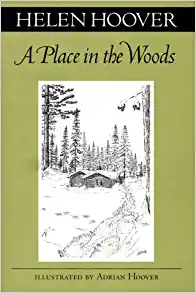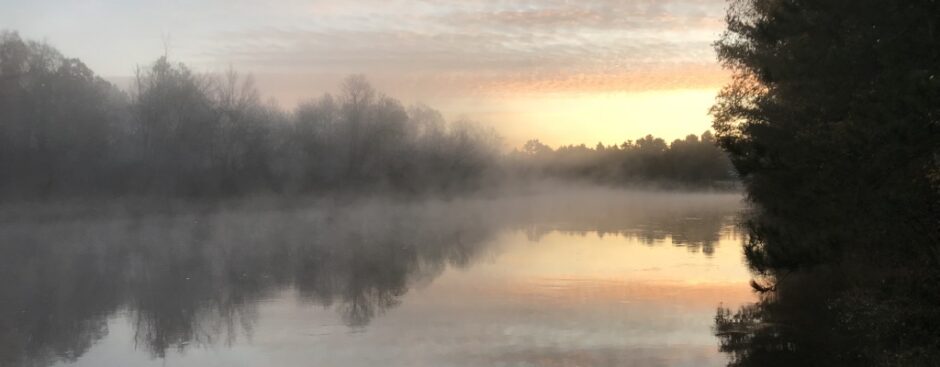
I “inherited” this hardcover (JPEG and ISBN above relate to the paperback version) from my maternal grandfather’s collection of outdoor books. I found it when I was pulling books from my 94-year-old mother’s shelf, getting things ready for an estate sale because she was moving from her lovely townhome on the St. Louis River into assisted living. Hard move, for sure. For all concerned, especially for Mom, who grew up skipping stones and catching frogs at the family resort on Bear Island Lake between Babbitt and Ely. Anyway. It’s a signed copy (by both the author and her illustrator/husband) but lacks the dust jacket, making it less a collectible and more of a family heirloom. I’d never read Hoover but had heard of her writing in the context of outdoor/wilderness writers such as Sig Olson and put the reclaimed book on my “to read” shelf, promising to get to it. And I did.
This is a bit different from say the writings of Olson or Sam Cook or Doug Wood, writers who spend considerable time exploring the spiritual value of wild places, hunting, fishing, camping, canoeing, and the like. Here, we are gifted a more domesticated view of living in a rustic cabin/home “off the grid” in the 1950s and early 60s. Hoover is quite clear that neither she nor her artist husband hunt or fish. The scenes painted by the author involving wildlife, from fisher to bear to deer mice to ruffed grouse to deer to black bear involve interactions between the animals and the human characters on rustic property up the Gunflint Trail. (I believe; she never really tells us where the cabins are) and do not involve stalking and killing animals for sustenance. This remains true even when the couple becomes snowed in, witnesses the dwindling of their food supplies, and things appear dire given they have no vehicle, no phone service, and no real neighbors close enough to assist them in times of need. But despite this personal reticence towards hunting and fishing, Hoover recognizes that such pursuits are part of the north wood’s heritage and doesn’t object, for example, to rendering aid to a wandering fur trapper who needs a place to stay, a warm fire, and food for his belly.
The writing is easy to follow, though at times, the author’s digressions to her past life in Chicago as a scientist intrude upon the meat and potatoes of the storytelling: which is essentially the tale of two city folk trying, without much experience or knowledge, to make a home and live their lives in NE Minnesota’s rugged and remote Arrowhead country. When she gets down to describing the sights, smells, and surroundings of her adopted land, she is every bit as good a writer as the others I’ve mentioned. The fact she writes with a more, as I’ve said, inward-looking, domestic eye, is not pejorative towards her gender: her perspective as a professional, a woman, and a wife simply gives us a different perspective. And that, in my view, makes this book well worth reading.
The concluding scenes (I won’t ruin it for you here) are riveting and leave a reader (me!) wanting more. Isn’t that what good writing, nature or otherwise, should do?
4 stars out of 5.
Peace
Mark


